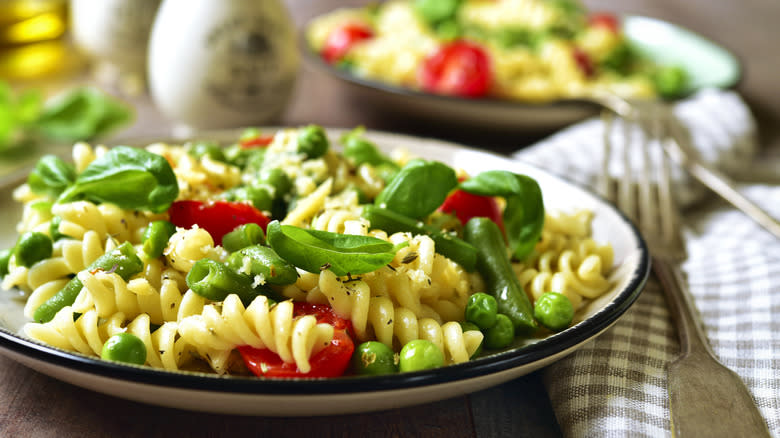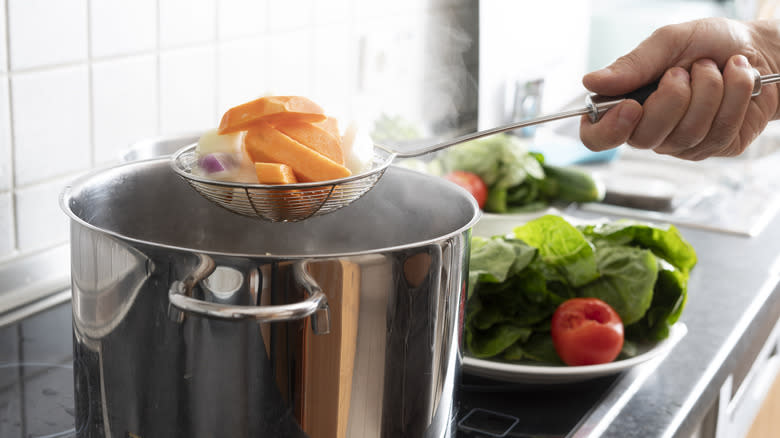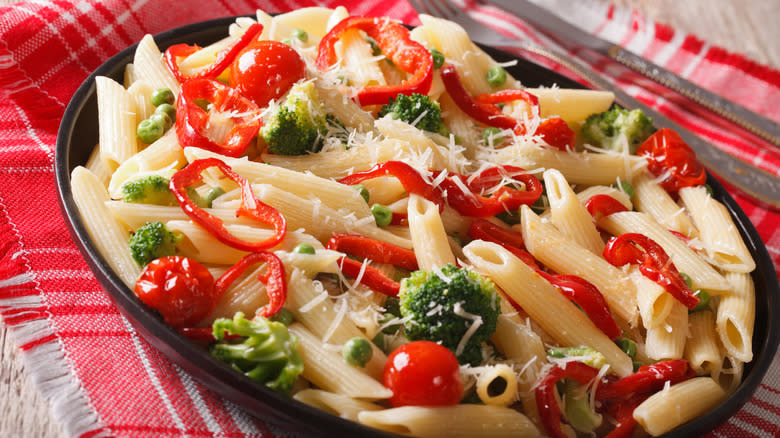The Big Mistake That Leads To An Underwhelming Pasta Primavera

- Oops!Something went wrong.Please try again later.
Featuring hearty, creamy pasta and an abundance of vegetables, pasta primavera is an Italian dish that's as filling as it is flavorful. The vegetable selection found in this pasta dish usually focuses on produce that's in season during the spring (primavera translates to "spring," after all), but you're certainly not limited to these veggies alone. No matter what you choose to incorporate into the recipe, you must blanch the vegetables before adding them to the pasta.
For the uninitiated, blanching involves placing vegetables in boiling water briefly (often just a few minutes or less), and then transferring them to ice water immediately to stop them from cooking. Failure to take this all-important step can lead to an unsatisfying outcome where texture is concerned. Blanching helps vegetables retain their vibrancy, but it also allows them to remain somewhat firm. This toothsome texture provides a brilliant contrast to the softer pasta and creamy sauce. While pasta primavera enthusiasts agree that blanching is non-negotiable, there are some differing schools of thought regarding the technique.
Read more: French Cooking Tricks You Need In Your Life
Blanching Vegetables Separately Vs. Blanching Together

The creation of pasta primavera is attributed to chef Sirio Maccioni, who is best known for founding the iconic New York City eatery Le Cirque. As you might imagine, Maccioni's original pasta primavera recipe was quite befitting a professional chef. For example, the mastermind behind the dish reportedly blanched every vegetable included in the recipe separately. That means each batch of vegetables was boiled and water bathed on its own, a laborious undertaking that would cause most home chefs to break out in a sweat.
The reason for this technique is to prevent any one vegetable from becoming overdone, as different vegetables require different blanching durations. And while some chefs adhere to the original instructions, others choose to blanch all the vegetables together in one fell swoop for convenience's sake. If you go this route, you will need to be mindful of cooking times to maintain the integrity of the vegetables you add to this pasta dish.
Timing Is A Major Consideration When Blanching Veggies Together

When sticking with a classic primavera recipe, vegetables like peas, asparagus, and broccoli will all make appearances. In this case, peas and broccoli should be blanched for two to three minutes, while asparagus can go as long as four minutes.
Keep in mind that pasta recipes can evolve with time. For instance, traditional alfredo sauce recipes lacked cream. Pasta primavera has also deviated from its original recipe, which means home chefs are free to incorporate their desired ingredients. With mushrooms, you'll want to give this earthy fungus the hot water treatment for approximately one minute, with two minutes being the absolute maximum. If you decide to whip up an autumnal pasta primavera recipe that includes squash, blanch the vegetable for no longer than 30 seconds to one minute. As for tomatoes, blanching is only necessary if you want to remove the skin of the fruit. It could be said that vegetables are the real stars of pasta primavera, and the right cooking technique preserves their appealing attributes.
Read the original article on Daily Meal

